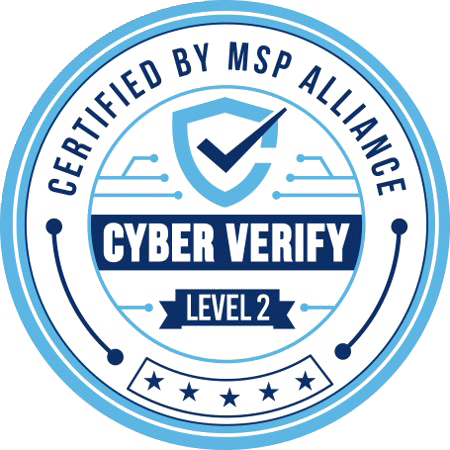Businesses today face the challenge of underutilized technology investments, which can drain resources and hamper growth. Crafting a robust IT business strategy is crucial to ensuring that technology expenditures directly contribute to key business outcomes.
Without a strategic framework, organizations may find themselves with advanced technologies that do not sync with their business needs, leading to inefficiencies and strategic missteps.
An effective IT business strategy acts as a blueprint, guiding technology decisions to support and actively enhance business objectives, enabling a sharper competitive edge and better resource management.
As Brian Leger, Co-Founder of InfoTECH Solutions, says, “A well-defined IT business strategy can bridge the gap of missed opportunities, ensuring that every technology investment and decision propels the business forward rather than holding it back.”
This strategic alignment is essential for businesses aiming to maximize returns on their IT investments and achieve sustained success in a dynamic marketplace. Let’s take a look at the key steps involved in creating a business IT strategy.
Your IT Should be Delivering Exceptional Business Value
Boost ROI with InfoTECH Solutions' value-driven IT strategies.
Learn More7 Essential Steps to Developing an Effective IT Business Strategy
Creating an effective IT business strategy involves several crucial steps that ensure technology not only supports but also drives the business to achieve its long-term goals. Here’s how you can develop a strategy that aligns IT with your business needs:
1. Understand Your Business Goals
The first step in formulating an IT strategy for business is to have a comprehensive understanding of your business goals. These goals should outline what the business aims to achieve regarding growth, customer satisfaction, and market expansion. The IT strategy must reflect and support these objectives to ensure cohesion and drive collective success.
2. Conduct a Current State Analysis
Analyze your organization’s current IT capabilities, including hardware, software, and human resources. Understanding what is already in place and where gaps exist is crucial for developing a strategy that addresses current needs and anticipates future requirements. This analysis should cover everything from data centers to service levels and support systems.
3. Define Strategic IT Objectives
Align the IT objectives with the broader business goals. This might involve enhancing data security to protect customer information, improving IT infrastructure for better service delivery, or investing in digital transformation initiatives to meet market demands.
The strategic objectives should be clear, measurable, and directly tied to supporting the organization’s ability to compete and innovate.

Source: Gartner
4. Develop a Technology Roadmap
A technology roadmap outlines the timeline and key milestones for implementing IT initiatives that support the strategic objectives. It should include upgrades to existing systems, adoption of new technologies, and phasing out obsolete infrastructure.
The roadmap must also consider the roles and responsibilities within the IT department and across the organization to ensure smooth execution.
5. Foster Stakeholder Engagement
Engaging key stakeholders—from business leaders to end users—is essential. Their input can provide insights into challenges and expectations, shaping a more effective IT strategy.
Additionally, their support can facilitate smoother implementation of new systems and changes within the organization.
6. Plan for Business Continuity
An effective IT business strategy ensures that the organization can maintain critical operations under various scenarios, including system failures and cyber-attacks. Planning for business continuity involves not only disaster recovery solutions but also ensuring that all critical systems have redundancy and fail-safe mechanisms.
7. Monitor and Adapt
The business and technological landscapes are constantly evolving. Regularly reviewing and adjusting the IT strategy is vital to stay relevant and effective. This might involve reassessing the technology roadmap, adapting to new market trends, or shifting IT priorities to meet emerging business challenges.
Essential Components of an IT Business Strategy
Here is a clear overview of the essential components that make up a comprehensive IT business strategy, detailing what each component involves and its role in the overall strategy.
| Component | Description | Role in Strategy |
| Governance | Establishing policies and controls for IT management. | Ensures alignment with business policies and compliance. |
| Technology Architecture | Designing the structure of IT systems and solutions. | Supports scalable and secure IT operations. |
| Resource Management | Allocating and managing IT resources, including staffing and budgets. | Optimizes use of IT assets and human resources. |
| Risk Management | Identifying, analyzing, and mitigating IT risks. | Protects against IT-related disruptions and vulnerabilities. |
| Vendor Management | Managing relationships with technology suppliers and service providers. | Secures favorable terms and ensures service quality. |
| Performance Metrics | Setting and monitoring IT performance indicators. | Tracks effectiveness and guides strategic adjustments. |
| Change Management | Planning and implementing IT changes across the organization. | Facilitates smooth transitions and minimizes disruptions. |
Build a Robust Business IT Strategy With InfoTECH Solutions
Businesses often face challenges in aligning their technology efforts with the strategic direction of the business, which can lead to increased operational costs and reduced competitiveness. A solid IT business strategy aligns with and enhances your business directives.
Discover Trusted IT Consulting Services Near You:
At InfoTECH Solutions, we specialize in turning technological potential into business success. We help articulate clear IT strategies that are customized to meet your unique business needs and goals. Don’t let technology misalignment hinder your progress.
Contact us today to schedule a free consultation and start aligning your IT with your business strategy.



